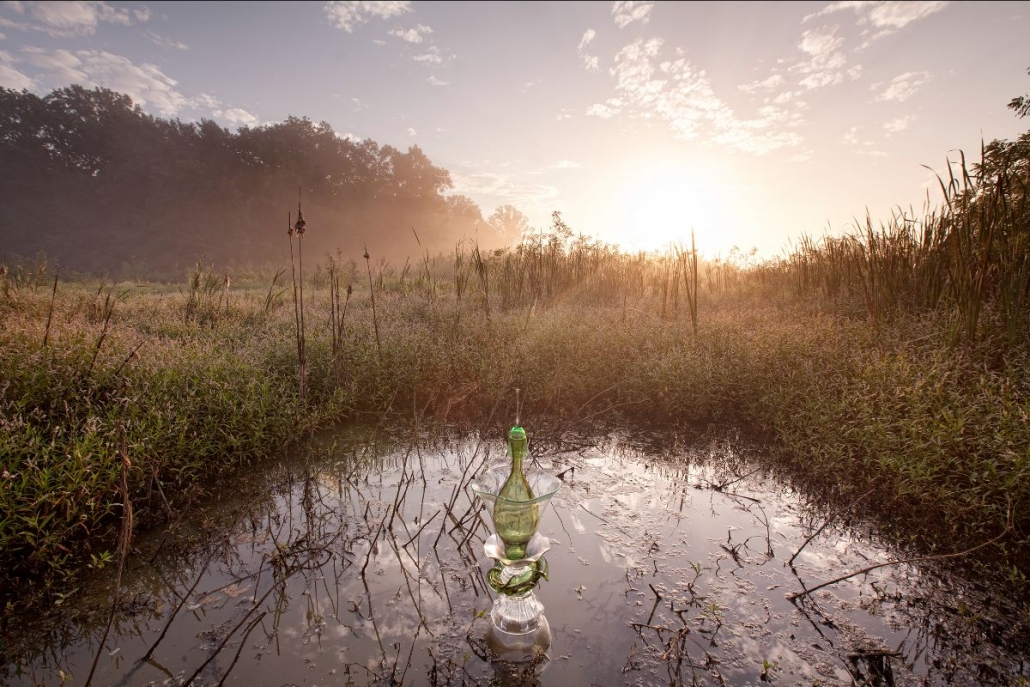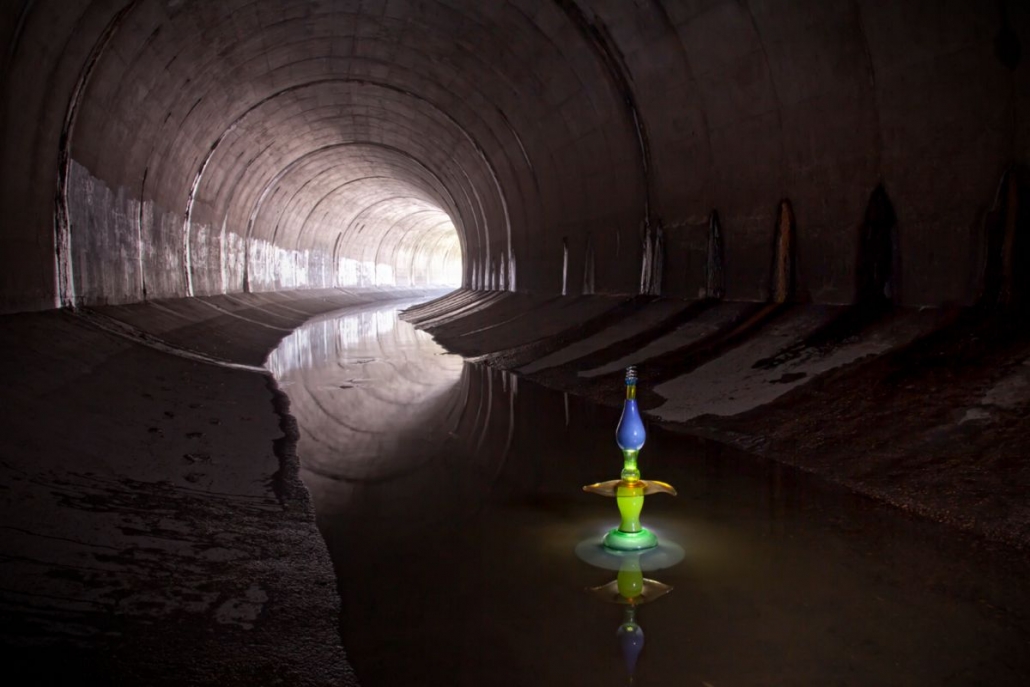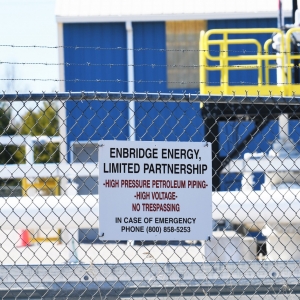Mapping the Water We Live On 💧
Editor’s Note: On Fridays, we’re sharing bits of inspiration from the water world, as well as behind-the-scenes looks of what it takes to bring you the news you rely on from Circle of Blue. What inspires you? We’d love to hear from you. Email your videography, photography, or other water art to info@cirlceofblue.org.
– Jane Johnston, Stream Editor

A foggy dawn in the wetlands south of Mascoutah, Illinois, reveals the green glass of the Silver Creek Spire cairn. Occasional jets from nearby Scott Air Force Base were only temporary interruptions to the croaking of frogs, the flittering of dragonflies and butterflies, and the sound of a small animal skittering through tall grasses. These wetlands drain into Silver Creek that meanders through agricultural land and small towns to join the Kaskaskia River before it flows into the Mississippi River, south of the St. Louis metropolitan area.
Libby Reuter and Joshua Rowan had been photographing their “cairns,” or stacked sculptures of recycled glass named after the towers of rocks used by hikers to mark trails, in the Mississippi-Missouri River basin for a few years before they realized the true purpose of their project.
“People feel an empathy with the glass and a connection to the beauty of the natural environment,” Reuter said. In other words, their work connected people with the water that flows all around them.
Reuter has understood this connection for some time. She was living in St. Louis, Missouri in 1993 when Mississippi River levels rose to record highs, causing one of the most costly and devastating floods in U.S. history.
“That flooding made rivers real,” she said. “They were not just thin blue lines on a map.”

The blue-and-green-glass FLOWer cairn sits in 6–12 inches of mostly rainwater on the curved floor of a 30-foot-diameter concrete tunnel. At intervals, grates in the bottom of the tunnel drain some of this stormwater into the wastewater flowing in the sanitary sewers, below. They flow to a St. Louis Metropolitan Sewer District treatment facility at the Mississippi River; but when a heavy rain overwhelms the system, it flows directly into the Mississippi at a combined sewer outflow, or CSO.
Years later, in 2011, she met Rowan – a photographer – at an art exhibit. By this point, she had come up with the idea to map watersheds through photography and art. After seeing his work, Reuter knew immediately Rowan could bring her vision to life.
Since then, the pair have traveled to hundreds of locations along the Mississippi, Missouri, and Ohio Rivers, documenting the watershed. Reuter’s glass creations are made by gingerly stacking second-hand plates, vases, light fixtures, and other objects on top of each other. They are fragile but flow together effortlessly – much like the water she draws inspiration from.
The duo marks a site’s geographical location by recording its longitude and latitude. Rowan’s photographs record something else – a moment in time. Rowan and Reuter, as well as others who follow their work, have gone back to some locations years later, only to find them drastically altered by erosion, development, or pollution.
The goal of the Watershed Cairns project, they say, is to educate people on what Rowan says is one’s “place in the grand scheme.”
“A lot of people don’t know they live in a watershed,” Reuter said. She hopes this project can play some role in changing that.
Photos: Joshua Rowan
Captions: Libby Reuter
Jane is a Communications Associate for Circle of Blue. She writes The Stream and has covered domestic and international water issues for Circle of Blue. She is a recent graduate of Grand Valley State University, where she studied Multimedia Journalism and Women, Gender and Sexuality Studies. During her time at Grand Valley, she was the host of the Community Service Learning Center podcast Be the Change. Currently based in Grand Rapids, Michigan, Jane enjoys listening to music, reading and spending time outdoors.






Leave a Reply
Want to join the discussion?Feel free to contribute!